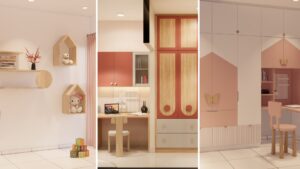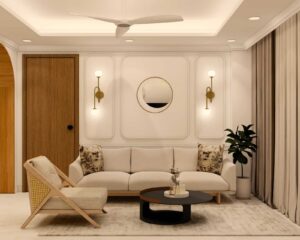When it comes to interior design, the balance between functionality and aesthetics is a topic of perpetual debate. Homeowners often find themselves torn between creating a visually appealing space and ensuring it serves its practical purpose. In this blog, we will explore the relationship between functionality and aesthetics in interior design. Tesor Designs as an interior firm has always emphasised its significance and how they can coexist harmoniously in house interior design.
Understanding Functionality and Aesthetics
Functionality refers to the usability and efficiency of a space, while aesthetics refers to the visual appeal and beauty of the design. Both aspects are crucial in interior design, as they contribute to creating a welcoming and comfortable environment. Striking the right balance between functionality and aesthetics is key to achieving an ideal living space.
The Importance of Functionality
Functionality should be the foundation of any interior design project. After all, what good is a visually stunning space if it fails to meet its intended purpose? A well-designed interior should seamlessly integrate practicality and convenience, making everyday activities efficient and enjoyable. Factors such as traffic flow, storage solutions, and proper lighting are vital considerations in ensuring functionality.
Creating Interior Designs for Aesthetics
While functionality lays the groundwork, aesthetics add the wow factor to a space. Interior designs focused on aesthetics can transform an ordinary room into a breathtaking environment. Colours, textures, patterns, and carefully selected decor items all play a role in creating a visually pleasing ambience. Paying attention to the principles of design, such as balance, proportion, and harmony, helps achieve an aesthetically pleasing result.
The Synergy of Functionality and Aesthetics
Rather than pitting functionality against aesthetics, the true challenge lies in finding ways to combine them synergistically. Interior designers strive to strike a balance that allows both aspects to enhance each other. For example, incorporating smart storage solutions that blend seamlessly into the overall design not only ensures functionality but also adds visual appeal.
The Role of House Interior Design
House Interior Design is where functionality and aesthetics become deeply intertwined. A well-designed home is a reflection of the homeowner’s personality and lifestyle while catering to their practical needs. Thoughtful space planning, suitable furniture selection, and attention to detail contribute to creating a harmonious environment where both functionality and aesthetics thrive.
Embracing Functional Aesthetic Solutions
Fortunately, many contemporary design trends focus on seamlessly blending functionality and aesthetics. Minimalist design, for instance, champions simplicity, clean lines, and clutter-free spaces while still emphasizing visual appeal. Multifunctional furniture and smart home technology are also gaining popularity, allowing homeowners to enjoy both practicality and aesthetics in their living spaces.
Functionality and aesthetics are not mutually exclusive Concepts in Interior Design. A successful design incorporates both elements to create a space that not only looks appealing but also serves its intended purpose efficiently. By embracing the synergy between functionality and aesthetics, one can achieve house interior designs that are not only visually stunning but also practical and comfortable.
Are you looking to strike the perfect balance between functionality and aesthetics in your home interior design? Contact Tesor Designs, our expert interior firm, to create a space that is both visually stunning and practical. Let us transform your living environment into a harmonious oasis that reflects your unique style and caters to your everyday needs. Don’t compromise on either functionality or aesthetics – achieve the best of both worlds with Tesor Designs. Contact us today for a consultation!


